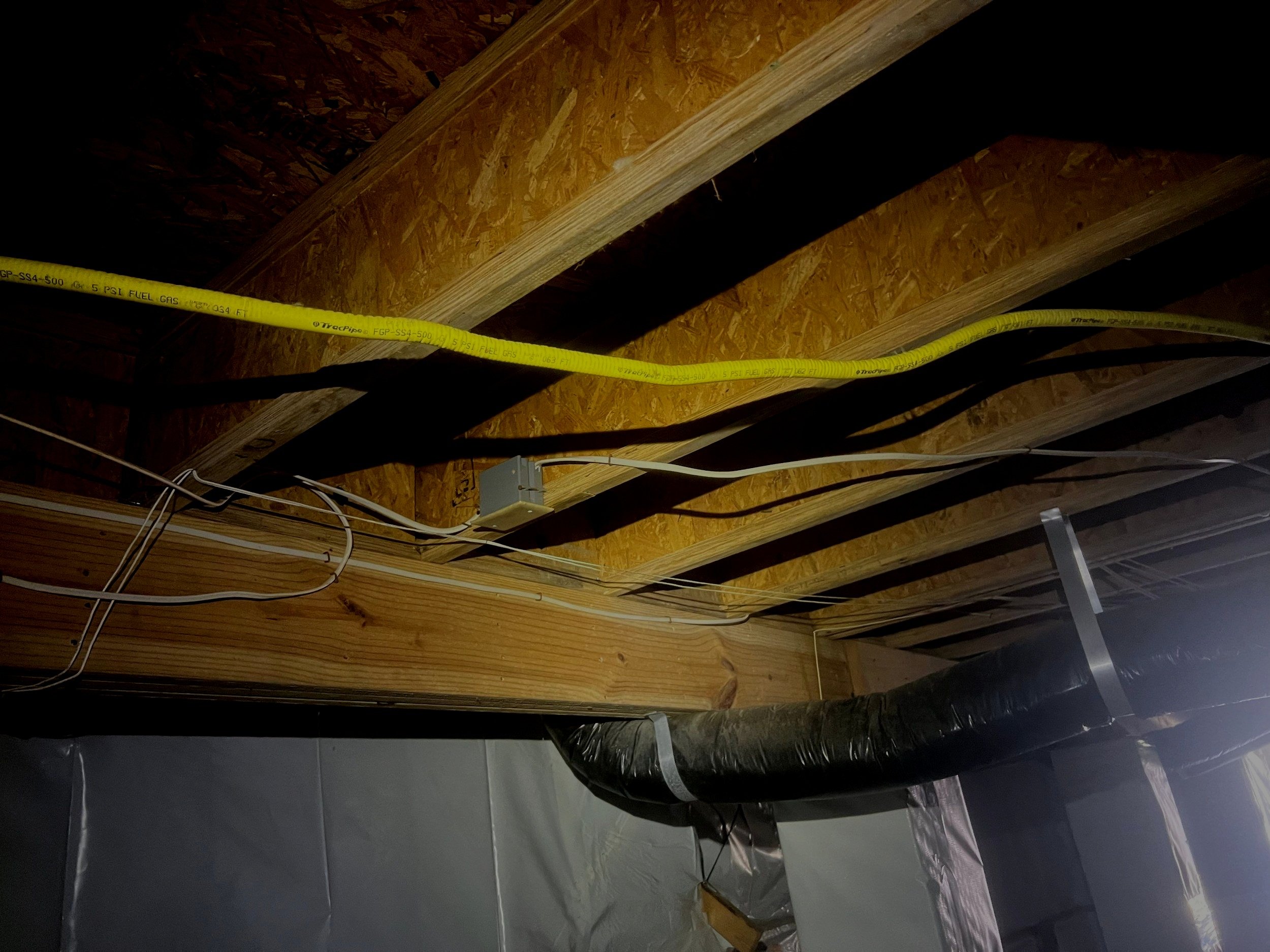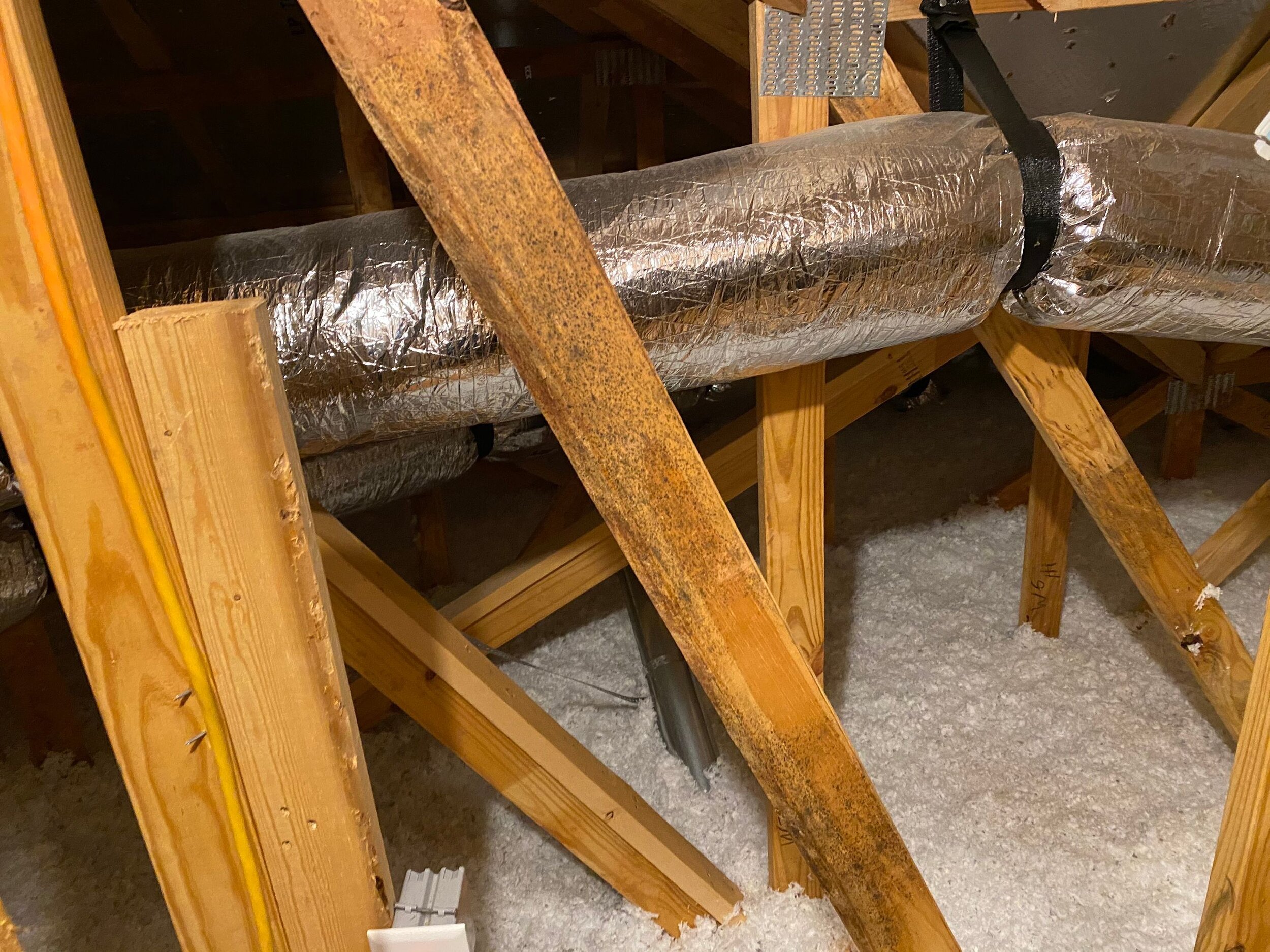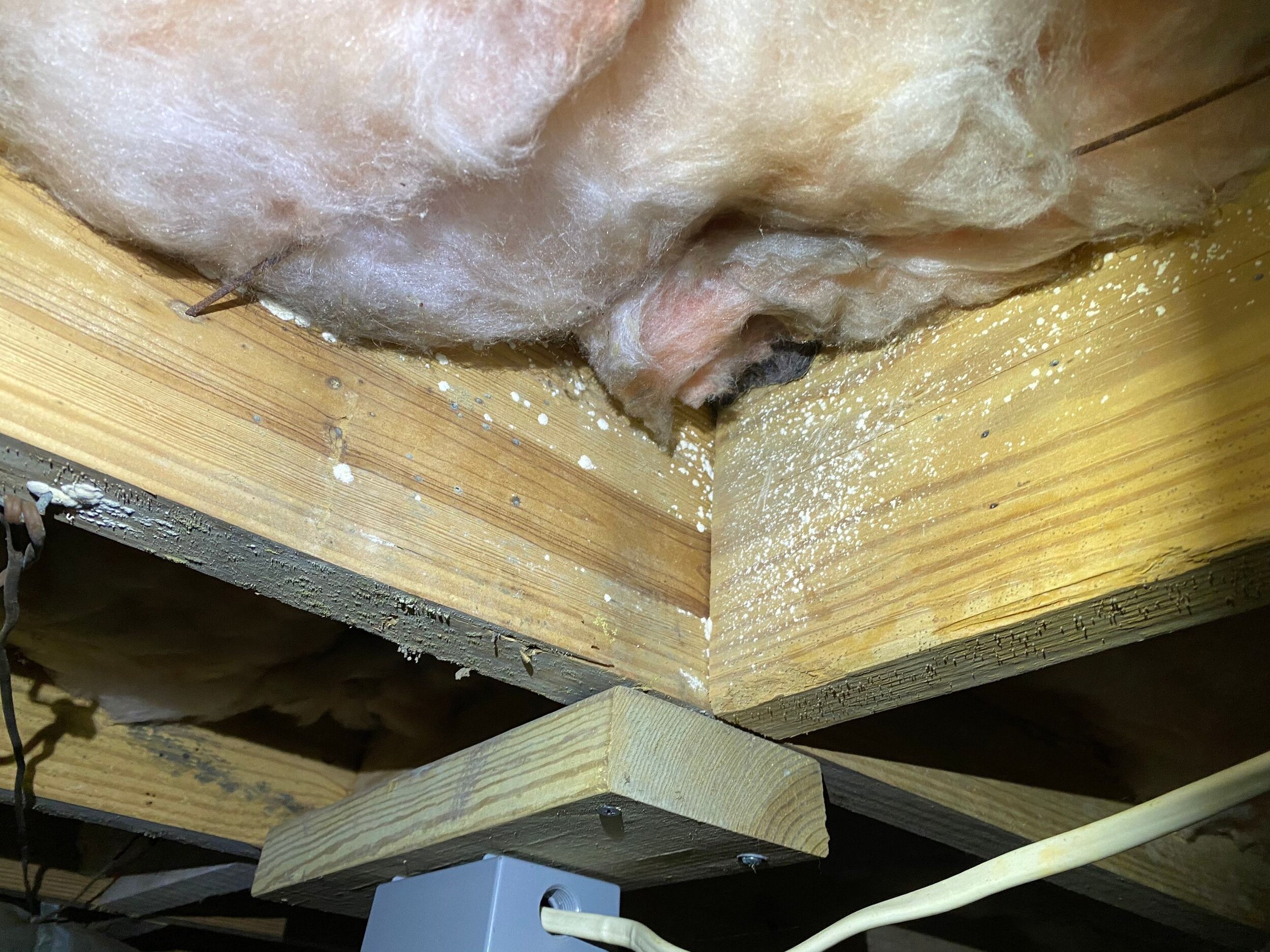
Your Mold Remediation Company in Raleigh, NC
When we remove mold in a crawl space we first treat the wooden surface and then scrub away the dead mold. Mold that is not scrubbed and removed can become active again when exposed to moisture. Also, dead mold can still cause allergenic reactions. We offer a spot mold treatment or full mold removal treatment. As a mold remediation company in Raleigh, NC, our full mold removal includes treating all wooden surfaces to guarantee 100% removal in the space.
Why Does Mold Need To Be Removed?
Mold that is left to grow will away at the wooden structures of the home. Also, it can travel to other areas, causing an even bigger problem. Mold can also cause health problems over time.
How does mold effect health?
Mold can be a very dangerous substance that grows in damp and dark environments. Depending on the species, mold can be extremely toxic and cause long-term health problems. Having a different effect on everyone, mold is especially dangerous to children, seniors, pregnant woman, and those with preceding health issues.
Mold growth on the subfloor where insulation is usually covering.
Mold Sensitivity: Mold affects people differently, depending on their well-being. People with mold allergies can be harshly affected immediately upon contact, while others may develop symptoms or, sensitivity, due to exposure overtime. Symptoms you may experience from mold sensitivity include:
Chest and nasal congestion
Sore throat
Stuffy nose and excessive sneezing
Skin irritation
Eye irritation
Headaches
Mold growth on a floor joist of a crawl space.
Respiratory Issues: Mold exposure can cause respiratory problems to develop in seemingly healthy individuals. Illnesses such as asthma can be developed during long-term exposure. People with pre-existing asthma who are exposed to mold are at risk for severe symptoms to take place and even cause asthma attacks. Symptoms include:
Shortness of breath
Coughing and wheezing
Upper respiratory problems
Severe Health Concerns: Toxigenic types of mold are especially dangerous to your health. Molds such as Stachybotrys or , “black mold,” produce mycotoxins which can lead to severe or even deadly conditions. Potential symptoms include:
Mold growth in an attic that requires mold remediation.
Immune and blood disorders
Liver and kidney problems
Pulmonary bleeding
Pulmonary fibrosis (lung scarring)
Neurotoxicity
Digestive issues
Heart problems
Cancer
The 3 Mold Classifications
Mold on floor boards that requires mold remediation.
Allergenic:
Very common.
Induces reactions to those with allergies, such as hives or asthma attacks.
Causes individuals to develop allergies or asthma.
Pathogenic:
Causes infections in healthy or immunocompromised individuals.
Can cause infections in humans and pets.
Toxigenic:
Produce toxins, called mycotoxins, which can lead to dangerous or deadly conditions.
Effects humans and animals.
Can cause severe issues such as immunosuppression, neurological disorders, and cancer.
Common Problems
Mold growth in attic that requires mold remediation
Mold will grow in places with a lot of moisture, such as around leaks in roofs, windows, or pipes, or where there has been flooding. Mold grows well on paper products, cardboard, ceiling tiles, and wood products. Mold can also grow in dust, paints, wallpaper, insulation, drywall, carpet, fabric, and upholstery. Mold generally does not grow in cold environments, but survives in them. Warm, humid conditions are ideal for mold growth. Most mold needs temperatures of 70 degrees Fahrenheit or more to grow, and a relative humidity of 70% or higher. Air conditioners that regulate the temperature of your house help prevent mold growth; however the crawl space is often the only space your home has that is not conditioned or regulated.
In some cases, mold in your home can make you sick, especially if you have allergies or asthma. Whether or not you're allergic to molds or not, mold exposure can irritate your eyes, skin, nose, throat, and lungs.
The presence of mold makes a home difficult to sell. Real estate agents need to inform their sellers that, legally, they need to disclose any mold problems. This is especially true if that homeowner knows there's a mold problem that may not be apparent from a basic home inspection.
Causes of Mold
Exposed dirt and insufficient ground coverage of the crawl space vapor barrier.
Flooding in the crawl space will lead to standing water, and increase moisture levels in the crawl space.
Unsealed foundation vents and air penetrations can lead to extremely high moisture levels in the summer time due to North Carolina’s typical humid climate.
Solutions
As a mold remediation company in Raleigh, NC, we offer environmentally friendly mold treatment for your crawl space and attic!
Spot Mold Treatment- For less severe mold issues, we target specific visible areas of mold.
Full Mold Remediation- For more severe cases of mold, all wood surfaces in the crawl space are sprayed and scraped with our concentrated mold killing formula. This requires the insulation to be removed to be able to reach all surfaces including the entire subfloor. The mold is treated at its root and all the spores are removed to restore the wood to its original condition.





